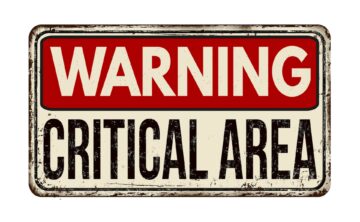With the amount of data a company holds growing exponentially every year, it’s becoming more and more important for businesses to have a system of record in place to manage it all.
One of the most talked about topics in the business world in 2023 was the data collected by large companies about customers. Now we leave our digital footprint with almost every site we visit. Although Europe and America have set certain standards in this matter, sometimes the need for a guardian angel that can help your company in this regard is increasing day by day.
This is exactly where the system of record comes into play. This system, which is obliged to check that your company operates at certain standards, has the capacity to find a solution to every potential data-related problem of companies in both legal and social areas.

What is a system of record?
A system of record (SOR) refers to a database or data management system that serves as the authoritative source of truth for a particular set of data or information. It is essentially a centralized repository that stores, manages, and maintains data related to a specific domain, such as customer information, financial transactions, or inventory levels.
The main purpose of a system of record is to provide a single, unified view of data that can be used by multiple applications, systems, and users across an organization. This helps ensure data consistency, accuracy, and integrity, as all stakeholders have access to the same up-to-date information.
A system of record typically has several key characteristics:
Authority: The system of record is considered the ultimate authority on the data it stores. All other systems or applications that require access to this data must retrieve it from the SOR, rather than storing their own copies.
Integration: A system of record integrates data from various sources, such as transactional databases, external data providers, or other systems. It acts as a single platform for data collection, processing, and reporting.
Standardization: The system of record enforces standardization of data formats, schemas, and definitions, ensuring that all data is consistent and well-defined.
Persistence: Once data is stored in a system of record, it is preserved for the long term, providing a historical record of all changes and updates.
Security: Access to the system of record is tightly controlled, with strict security measures in place to protect sensitive data from unauthorized access, modification, or breaches.
Scalability: An SOR should be designed to handle large volumes of data and scale as the organization grows, without compromising performance or functionality.
Governance: Clear policies and procedures governing the management and maintenance of the system of record, including data quality control, validation, and cleansing processes.
Auditability: The system of record maintains detailed audit trails of all transactions, allowing for easy tracking and monitoring of data modifications, insertions, and deletions.
Compliance: The system of record adheres to relevant regulatory requirements, industry standards, and organizational policies, ensuring that data is handled and stored in accordance with legal and ethical guidelines.
Interoperability: A system of record can seamlessly integrate with other systems, applications, and platforms through APIs or other data exchange mechanisms, enabling efficient data sharing and collaboration across the organization.

The importance of privacy and compliance in business
Privacy and compliance are two crucial aspects of any business operation, especially in today’s digital age where data collection and processing have become an integral part of almost every industry. Both privacy and compliance are closely related to data handling practices and play a vital role in building trust between organizations and their customers, employees, partners, and other stakeholders.
Respecting customers’ privacy and protecting their personal information builds trust and reinforces a positive reputation for your business. A strong privacy policy demonstrates your commitment to safeguarding sensitive data, which can lead to increased customer loyalty and advocacy. Moreover, privacy regulations like the General Data Protection Regulation (GDPR) in the European Union, the California Consumer Privacy Act (CCPA) in the United States, and similar laws worldwide, impose strict rules on how businesses collect, store, and process personal data. Adhering to these regulations helps avoid hefty fines and penalties, reputational damage, and potential loss of business.
Protecting individuals’ privacy is not only a legal requirement but also an ethical responsibility. As technology advances and data collection methods become more sophisticated, it’s essential to respect users’ autonomy and ensure their personal information is handled with care and discretion. In today’s privacy-focused market, companies that prioritize data protection and user privacy may enjoy a competitive edge over those that do not. By emphasizing robust privacy controls, you can differentiate your business from rivals and attract customers who value their online security and privacy.
Compliance with data protection regulations, industry standards, and sector-specific laws is critical to avoid legal repercussions and financial penalties. Non-compliance can lead to significant risks, including data breaches, cyber-attacks, intellectual property theft, and brand reputation damage. Maintaining compliance minimizes these risks by implementing appropriate safeguards, monitoring processes, and incident response plans. Compliance also fosters trust among stakeholders, enabling stable partnerships, investments, and customer relationships. It facilitates cross-border data transfers and trade, allowing businesses to expand globally without worrying about regulatory barriers or legal disputes.
A strong compliance posture forces organizations to maintain tight controls on their data, which often leads to better data quality, reduced data duplication, and more efficient data processing. Well-managed data enables informed decision-making, cost savings, and competitive advantages. Moreover, compliance demonstrates a company’s commitment to ethical practices, and building trust with customers, employees, and partners. A strong reputation based on compliance and privacy best practices contributes to long-term success and growth.

What are the steps to build a system of record for privacy and compliance?
Building a system of record for privacy and compliance involves several steps that help organizations ensure they are collecting, storing, and processing personal data in a way that is both compliant with regulations and respectful of individuals’ privacy rights.
Here are the steps involved in building such a system:
Define the purpose and scope
The first step in building a system of record for privacy and compliance is to define its purpose and scope. This involves identifying the types of personal data that will be collected, stored, and processed, as well as the sources of this data, the reasons for collecting it, and the parties who will have access to it. The scope should also include the geographic locations where the data will be collected, stored, and processed, as well as any third-party processors or sub-processors who may have access to the data.
To define the purpose and scope of the system of record, organizations should consider the following factors:
- The type of personal data being collected (e.g., names, email addresses, phone numbers, financial information)
- The source of the personal data (e.g., customer databases, employee records, website forms)
- The purpose of collecting the personal data (e.g., marketing, sales, customer service, HR management)
- The parties who will have access to the personal data (e.g., employees, contractors, third-party vendors)
- The geographic locations where the data will be collected, stored, and processed (e.g., countries with specific data protection laws)
- Any third-party processors or sub-processors who may have access to the data (e.g., cloud storage providers, data analytics firms)
Once the purpose and scope of the system of record are defined, organizations can begin to identify applicable regulations and develop a plan for implementing privacy controls.
Identify applicable regulations
The second step is to identify all applicable privacy and security regulations that apply to the system of record. This could include GDPR, CCPA, HIPAA/HITECH, PCI DSS, NIST Cybersecurity Framework, and other industry-specific standards. It’s essential to understand the requirements of each regulation and how they impact the collection, storage, and processing of personal data.
To identify applicable regulations, organizations should consider the following factors:
- The location of the organization and the personal data it collects, stores, and processes
- The type of personal data being collected, stored, and processed
- The industries or sectors involved in the collection, storage, and processing of personal data (e.g., healthcare, finance, retail)
- Any relevant regulatory bodies or authorities that oversee the organization’s handling of personal data
Once applicable regulations are identified, organizations can conduct a Data Protection Impact Assessment (DPIA) to assess privacy risks and evaluate the effectiveness of existing controls.

Conduct a data protection impact assessment (DPIA)
Conducting a data protection impact assessment (DPIA) helps organizations identify and mitigate potential privacy risks associated with the system of record. A DPIA involves assessing the likelihood and severity of potential privacy breaches, evaluating the effectiveness of existing controls, and recommending additional measures to minimize risk. The DPIA should be documented and updated regularly to ensure that the system of record remains compliant with evolving privacy regulations.
To conduct a DPIA, organizations should follow these steps:
- Identify the personal data processing activities that pose high privacy risks (e.g., large-scale processing of sensitive data, processing of data from vulnerable populations)
- Assess the likelihood and severity of potential privacy breaches resulting from these activities
- Evaluate the effectiveness of existing controls and procedures for protecting personal data
- Recommend additional measures to minimize privacy risks, such as implementing encryption, access controls, or anonymization techniques
- Document the findings and recommendations of the DPIA and update them regularly to reflect changes in the system of record or applicable regulations
After completing the DPIA, organizations can design and implement privacy controls to address identified risks.
Build a wall around your sensitive data with advanced threat protection
Design and implement privacy controls
Based on the findings from the DPIA, design and implement privacy controls to address identified risks. These controls may include technical measures such as encryption, access controls, and pseudonymization, as well as organizational measures such as data protection policies, procedures, and training programs. It’s important to involve stakeholders from various departments, including IT, legal, and compliance, to ensure that the controls are effective and practical to implement.
When designing and implementing privacy controls, organizations should consider the following factors:
- The specific privacy risks identified in the DPIA
- The type of personal data being collected, stored, and processed
- The sources of personal data (e.g., customer databases, employee records)
- The parties who will have access to the personal data (e.g., employees, contractors, third-party vendors)
- Any applicable industry standards or best practices for protecting personal data
Privacy controls should be designed to meet the requirements of applicable regulations while also being practical to implement and maintain. Organizations should test their controls regularly to ensure they remain effective in mitigating privacy risks.
Develop a data management plan
A data management plan outlines how personal data will be collected, stored, processed, and deleted within the system of record. It should include details about data retention periods, data backup and recovery processes, incident response plans, and data subject rights. The plan should also address how third-party processors or sub-processors will handle personal data and how they will comply with applicable regulations.
To develop a data management plan, organizations should consider the following factors:
- The types of personal data being collected, stored, and processed
- The sources of personal data (e.g., customer databases, employee records)
- The purposes of collecting personal data (e.g., marketing, sales, customer service, HR management)
- The parties who will have access to the personal data (e.g., employees, contractors, third-party vendors)
- Any applicable regulations or industry standards for managing personal data
- Data retention periods and schedules for deleting personal data
- Procedures for backing up and restoring personal data
- Incident response plans for responding to data breaches or other security incidents
- Processes for handling data subject requests (e.g., requests for access, correction, deletion)
The data management plan should be regularly reviewed and updated to reflect changes in the system of record or applicable regulations.

Establish accountability and governance structure
Establishing an accountability and governance structure ensures that the system of record is managed in accordance with applicable regulations and industry best practices. This includes appointing a data protection officer (DPO) or equivalent, establishing a data governance committee, defining roles and responsibilities for data handling and processing, and developing policies and procedures for data management and security. Regular audits and assessments should be conducted to ensure that the governance structure remains effective and compliant.
To establish an accountability and governance structure, organizations should consider the following factors:
- Applicable regulations and industry standards for data privacy and security
- The size and complexity of the organization’s data processing activities
- The types of personal data being collected, stored, and processed
- The parties who will have access to the personal data (e.g., employees, contractors, third-party vendors)
- Roles and responsibilities for managing personal data and ensuring compliance
- Policies and procedures for data management and security
- Training programs for educating personnel about data privacy and security
- Incident response plans for responding to data breaches or other security incidents
- Regular audits and assessments to evaluate the effectiveness of the governance structure
By establishing a robust accountability and governance structure, organizations can ensure that their system of record remains compliant with evolving privacy regulations and industry best practices.
Train personnel and communicate with stakeholders
Training personnel and communicating with stakeholders helps ensure that everyone involved in the system of record understands their roles and responsibilities regarding privacy and compliance. Training programs should cover topics such as data protection principles, regulations, security measures, and incident response procedures. Stakeholders should include employees, contractors, third-party vendors, and any other parties who will have access to personal data.
To train personnel and communicate with stakeholders, organizations should consider the following factors:
- The types of personal data being collected, stored, and processed
- Applicable regulations and industry standards for data privacy and security
- Roles and responsibilities for managing personal data and ensuring compliance
- Policies and procedures for data management and security
- Training programs for educating personnel about data privacy and security
- Incident response plans for responding to data breaches or other security incidents
- Regular evaluations of the effectiveness of training programs and communication strategies
By training personnel and communicating with stakeholders, organizations can ensure that everyone involved in the system of record is aware of their responsibilities regarding privacy and compliance. This helps minimize the risk of non-compliance and protects the organization from potential legal and reputational harm.
Building a system of record for privacy and compliance is a complex task, but it is essential for businesses that collect and process personal data. By following the steps outlined in this article, organizations can create a SOR that meets their specific needs and helps them to protect their customers’ privacy.
Featured image credit: kjpargeter/Freepik.
- SEO Powered Content & PR Distribution. Get Amplified Today.
- PlatoData.Network Vertical Generative Ai. Empower Yourself. Access Here.
- PlatoAiStream. Web3 Intelligence. Knowledge Amplified. Access Here.
- PlatoESG. Automotive / EVs, Carbon, CleanTech, Energy, Environment, Solar, Waste Management. Access Here.
- PlatoHealth. Biotech and Clinical Trials Intelligence. Access Here.
- ChartPrime. Elevate your Trading Game with ChartPrime. Access Here.
- BlockOffsets. Modernizing Environmental Offset Ownership. Access Here.
- Source: https://dataconomy.com/2023/09/08/how-to-build-a-system-of-record/
- :has
- :is
- :not
- :where
- $UP
- 1
- 2023
- a
- About
- access
- accordance
- accountability
- accuracy
- accurate
- across
- Act
- activities
- acts
- Additional
- address
- addresses
- adhering
- advanced
- advances
- advantages
- advocacy
- age
- All
- All Transactions
- Allowing
- almost
- also
- Although
- america
- among
- amount
- an
- analytics
- and
- Angel
- any
- APIs
- applicable
- applications
- Apply
- appropriate
- ARE
- areas
- around
- article
- AS
- aspects
- assess
- Assessing
- assessment
- assessments
- associated
- At
- attract
- audit
- audits
- Authorities
- authority
- avoid
- aware
- backing
- Backup
- barriers
- based
- BE
- become
- becoming
- begin
- being
- BEST
- best practices
- Better
- between
- bodies
- both
- brand
- breaches
- build
- Building
- builds
- business
- businesses
- but
- by
- CA
- california
- California Consumer Privacy Act
- CAN
- Capacity
- care
- CCPA
- centralized
- certain
- Changes
- characteristics
- check
- clear
- closely
- Cloud
- cloud storage
- collaboration
- collect
- Collecting
- collection
- collects
- comes
- commitment
- committee
- communicate
- communicating
- Communication
- Companies
- company
- Company’s
- competitive
- completing
- complex
- complexity
- compliance
- compliant
- comply
- compromising
- Conduct
- conducted
- Consider
- considered
- consistent
- constantly
- consumer
- consumer privacy
- contractors
- contributes
- control
- controlled
- controls
- copies
- Cost
- cost savings
- could
- countries
- cover
- create
- critical
- cross-border
- crucial
- customer
- customer information
- Customer Loyalty
- Customer Service
- Customers
- Cybersecurity
- damage
- data
- Data Analytics
- Data Breaches
- Data Exchange
- data management
- data privacy
- data processing
- data protection
- data quality
- data sharing
- Database
- databases
- day
- Decision Making
- define
- defined
- defining
- definitions
- demonstrates
- departments
- Design
- designed
- designing
- detailed
- details
- develop
- developing
- differentiate
- digital
- digital age
- direction
- discretion
- disputes
- do
- documented
- domain
- e
- each
- easy
- Edge
- educating
- Effective
- effectiveness
- efficient
- emphasizing
- Employee
- employees
- enables
- enabling
- encryption
- enjoy
- ensure
- ensures
- ensuring
- Equivalent
- especially
- essential
- essentially
- establish
- establishing
- Ether (ETH)
- ethical
- Europa
- Europe
- European
- european union
- evaluate
- evaluating
- evaluations
- Every
- everyone
- evolving
- exactly
- exchange
- existing
- Expand
- exponentially
- external
- facilitates
- factors
- finance
- financial
- financial information
- Find
- findings
- fines
- firms
- First
- follow
- following
- Footprint
- For
- Forces
- forms
- fosters
- Framework
- from
- functionality
- GDPR
- geographic
- Globally
- governance
- governing
- Growing
- Grows
- Growth
- guardian
- guidelines
- handle
- handled
- Handling
- harm
- Have
- healthcare
- help
- helps
- High
- historical
- holds
- How
- How To
- hr
- HTTPS
- identified
- identify
- identifying
- image
- Impact
- implement
- implementing
- importance
- important
- impose
- in
- incident
- incident response
- include
- includes
- Including
- increased
- increasing
- industries
- industry
- industry standards
- industry-specific
- information
- informed
- integral
- integrate
- Integrates
- integrity
- intellectual
- intellectual property
- into
- inventory
- Investments
- involve
- involved
- involves
- IT
- ITS
- jpg
- Key
- large
- large-scale
- Laws
- lead
- Leads
- Leave
- Legal
- levels
- like
- likelihood
- location
- locations
- Long
- long-term
- loss
- Loyalty
- Main
- maintain
- maintaining
- maintains
- maintenance
- manage
- managed
- management
- management system
- manages
- managing
- Market
- Marketing
- Matter
- max-width
- May..
- measures
- mechanisms
- Meet
- Meets
- methods
- minimize
- minimizes
- Mitigate
- mitigating
- Modifications
- monitoring
- more
- more efficient
- Moreover
- most
- multiple
- must
- names
- Need
- needs
- nist
- now
- numbers
- obliged
- of
- Officer
- often
- on
- once
- online
- online security
- only
- operates
- operation
- or
- organization
- organizational
- organizations
- Other
- our
- outlined
- outlines
- over
- oversee
- own
- part
- particular
- parties
- partners
- partnerships
- PCI DSS
- perfect
- performance
- periods
- personal
- personal data
- personal information
- Personnel
- phone
- Place
- plan
- plans
- platform
- Platforms
- plato
- Plato Data Intelligence
- PlatoData
- Play
- policies
- policy
- populations
- pose
- positive
- potential
- Practical
- practices
- principles
- Prioritize
- privacy
- Privacy and Security
- privacy policy
- Problem
- procedures
- process
- processed
- processes
- processing
- processors
- Programs
- property
- protect
- protecting
- protection
- provide
- providers
- providing
- purpose
- purposes
- quality
- Questioned
- rather
- reasons
- recommendations
- recommending
- record
- records
- recovery
- Reduced
- refers
- reflect
- regard
- regarding
- regular
- regularly
- Regulation
- regulations
- regulations Are
- regulatory
- reinforces
- related
- Relationships
- relevant
- remain
- remains
- repercussions
- Reporting
- repository
- reputation
- requests
- require
- requirement
- Requirements
- respect
- responding
- response
- responsibilities
- responsibility
- restoring
- resulting
- retail
- retention
- reviewed
- right
- rights
- Risk
- risks
- rivals
- robust
- Role
- roles
- rules
- safeguarding
- safeguards
- sales
- same
- Savings
- Scale
- scope
- seamlessly
- Second
- sector-specific
- Sectors
- security
- security measures
- sensitive
- serves
- service
- set
- several
- sharing
- should
- significant
- similar
- single
- site
- Size
- Social
- solution
- sophisticated
- Source
- Sources
- special
- specific
- stable
- stakeholders
- standardization
- standards
- States
- Step
- Steps
- storage
- store
- stored
- stores
- strict
- strong
- structure
- subject
- success
- such
- system
- system of record
- Systems
- Take
- Task
- Technical
- Technology
- term
- test
- than
- that
- The
- the security
- theft
- their
- Them
- These
- they
- third-party
- this
- those
- threat
- Through
- tightly
- to
- today’s
- Topics
- Tracking
- trade
- Train
- Training
- transactional
- Transactions
- transfers
- Trust
- truth
- two
- type
- types
- typically
- ultimate
- understand
- understands
- unified
- union
- United
- United States
- up-to-date
- Update
- updated
- Updates
- used
- User
- user privacy
- users
- validation
- value
- various
- Vault
- vendors
- View
- Visit
- vital
- volumes
- Vulnerable
- Wall
- was
- Way..
- we
- Website
- WELL
- well-defined
- which
- while
- WHO
- will
- with
- within
- without
- world
- worldwide
- year
- you
- Your
- zephyrnet












